EXTERIORS - SIDING

Siding
Homes in Hartney area are
typically clad with wooden siding or brick.
The exterior wall surfaces are important expressions of the buildings’
character – a character defining element – and every effort should be
made to protect and maintain them.
Wood
Replacing the wooden siding with
materials such as vinyl or stucco is
not recommended and will compromise the building’s heritage value as
well as, in the case of vinyl siding, replacing a reparable,
maintainable material with one that cannot be repaired when it fails.
Wood siding in good condition can
be maintained almost indefinitely
with regular care, and areas of rot can be cut out and replaced. New
boards can be milled to match (have a few extras made while you’re at
it), or matching siding may be salvaged from a building that is being
torn down.
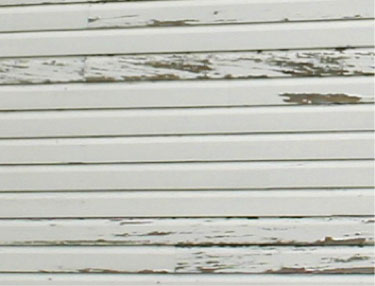 |
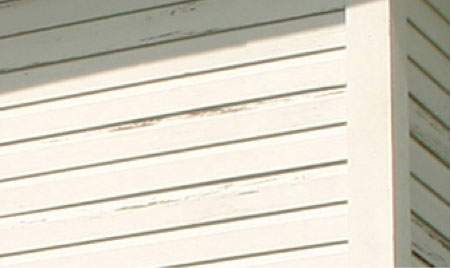
|
The
siding is over 100 years old.
Even though it has been allow to
deteriorate, it can be salvaged quite easily some careful scraping and
paint.
Brick
Hartney’s two brickyards provided
the materials for many of Hartney’s
heritage homes, giving added historical significance.
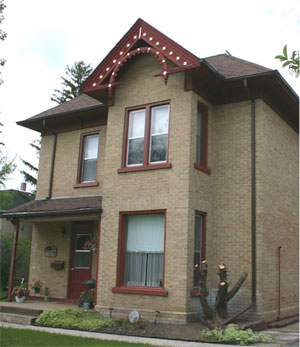
This 105 year old home features
well preserved brick.
Brick should not be painted unless
it already has been and is in need
of maintenance.
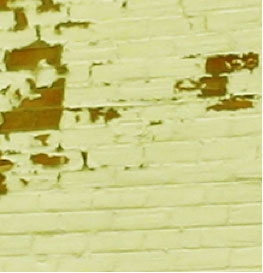
If a brick building has been
painted it is generally advisable that the
paint not be removed.
Although the intention to go back
to the original brick finish is good,
removing paint from old brick is not recommended. Bricks from the early
20th century were hard on the outside surface, but softer on the
inside. If paint removal is undertaken with severe methods such as sand
blasting, the bricks will be damaged, the soft interior exposed, and
deterioration of the brick will be quick and inevitable. If it is the
paint colour that does not suit the character of the building and
streetscape, the brick could be painted a similar colour to the natural
brick under it. Paint can be
removed chemically, but this is a
costly invasive process.
Maintaining Bricks
The following is adapted from on
of the many online resources available:
http://www.home-wizard.com/how-to-guide/home-outdoors/brick-siding/articles-videos/brick-siding-care.aspx
For most homes, brick siding
requires significantly less maintenance
than wood siding. Proper care for your brick requires routine cleaning,
protection, and timely repairs.
Routine Cleaning
For general cleaning use a mild
detergent, a hose and a brush. Using a
power washer will risk damaging your mortar and caulking, and if your
brick is painted, power washing painted brick will likely cause the
paint to peel or fade.
If lawn or garden sprinklers have
left hard-water spots on your home’s
brick exterior, these can be removed with an acid-based brick cleaner.

To remove stains from vegetation
that is growing near or on your brick
siding, use oxygen bleach or fungicide solutions.
If your bricks appear to have a
white crystal-looking powder on them,
you likely have "efflorescence" which is caused by moisture getting
into your bricks and then the dissolved salts evaporating on the
surface. Efflorescence can be removed with a stiff bristled broom.
A good cleaner for mold and mildew
is a 50/50 mix of oxygen bleach and
water. Be sure to use protection for your eyes, hands and skin, cover
nearby plantings, and apply with a stiff-bristled nylon brush on an
extension handle. And be sure to rinse thoroughly when done.
Rust stains on brick can be caused
by ironwork adjacent to your siding,
or by particles of ironstone in the mortar leeching out. Rust stains on
the brick can usually be cleaned by hard scrubbing with a damp
stiff-bristled brush. If the source of the rust is ironwork, then it
will need to be cleaned primed and re-sealed. And if it is due to
ironstone in the mortar, then the affected mortar areas will need to be
repaired in a process called "re-pointing."
Cleaning algae can be done with a
mixture of 1 gallon of water and 1
cup of oxygen bleach. Take necessary precautions.
Protecting
Applying a silane-based or
siloxane-based sealer to your brick will
help prevent moisture-related problems such as efflorescence and
spalling. Your brick should be thoroughly cleaned before applying a
sealer.
If you have brick sills, ensure
that they properly sealed and there are
no cracks in the mortar that could allow moisture to seep behind the
brick below the sill.
Routinely inspections should
consider: signs of water penetrations;
that all "weep" holes at the bottoms of the walls are open; that
flashing is in place; no cracks forming in mortar; no bulges in the
walls; no signs of spalling (face of brick flaking off); no vines
creeping up; that caulking is in place and good condition; and there no
signs of efflorescence, mildew, or other stains.
Vines and ivy look beautiful on
brick walls, but their roots can work
their way into loose mortar, and cause it to loosen it further. In
addition, they can climb onto nearby woodwork, and bring insects and
moisture which will cause rotting and other problems.
Repairing / Repointing
If sections of your brick wall
have begun to bow outward, it is likely
that moisture has gotten behind the wall and caused the mortar to
deteriorate around the wall ties that hold the brick onto the side
walls.
If the mortar between your bricks
has begun to crack and deteriorate,
then it will need to be repaired in a process called
"re-pointing."
Spalling is when the face of the
bricks begins to crack off. This is
typically caused by moisture getting into the brick, freezing, and then
1/8 to 1/4 inch of the surface separates and falls off. Affected bricks
will need to be replaced (or sometimes they can be turned around), and
the source of the moisture needs to be remedied.
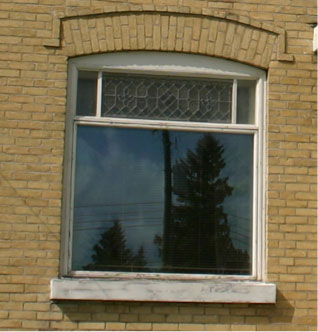
A well-designed
window is enhanced by the brick siding and trim.
|
